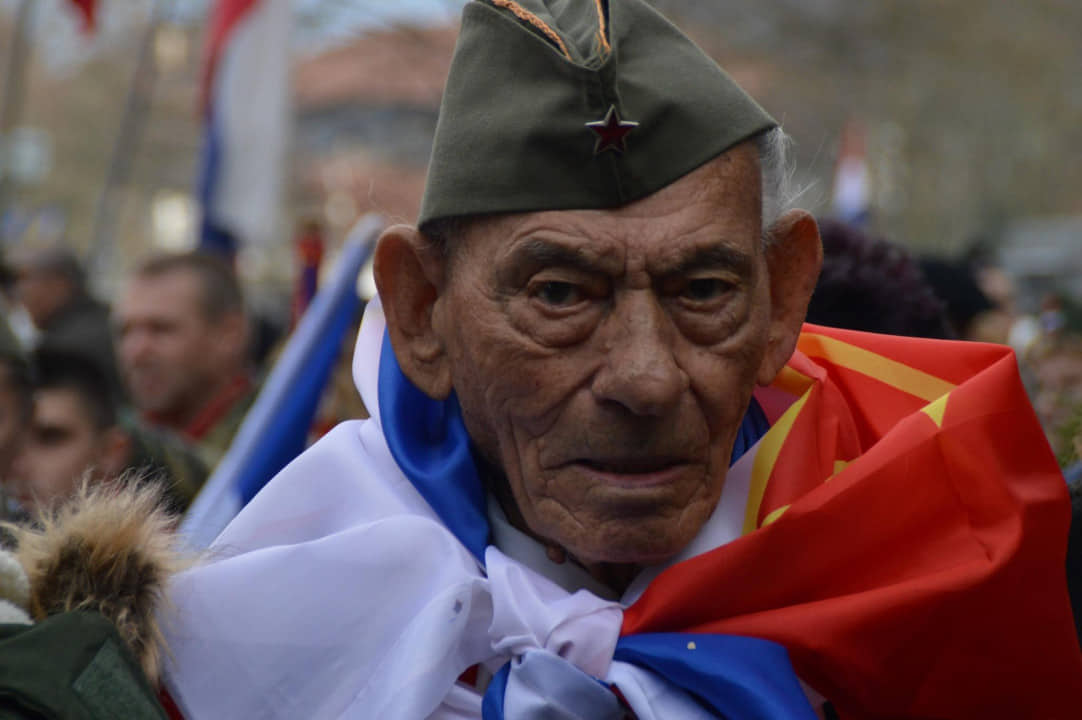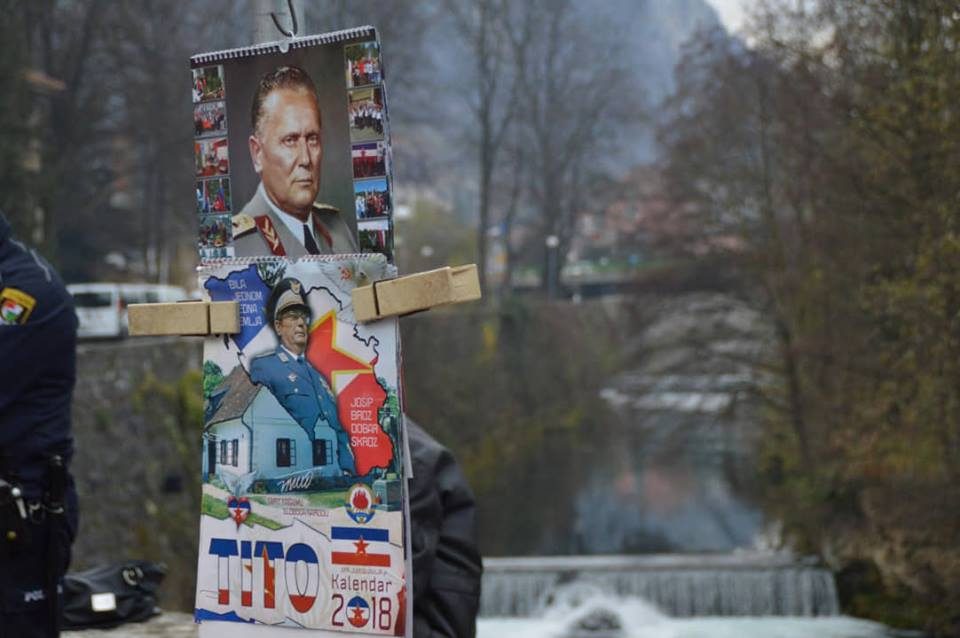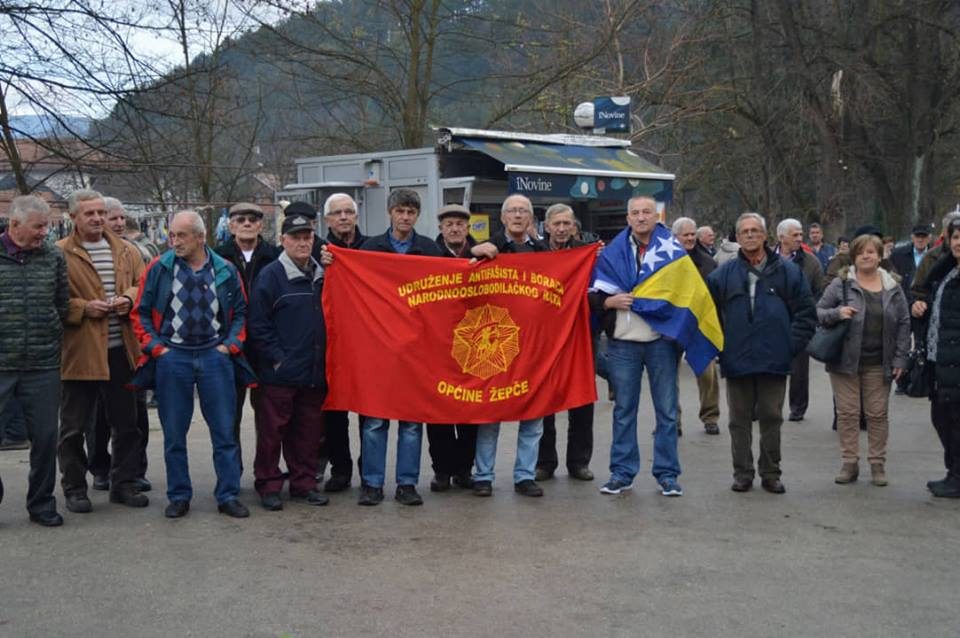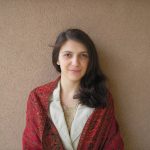
“If only it could be like the good ol’ times, a time of power and of Tito and his pioneers. Everything would be easier.” This is a sentiment you will often hear from people living in Bosnia and Herzegovina, but you will experience the greatest sense of nostalgia in the royal city of Jajce if you visit the Museum of the Second AVNOJ Session in late November.
The Museum of the Second AVNOJ (Anti-Fascist Council for the National Liberation of Yugoslavia) Session was founded in 1953, and the building in which it is located dates back to the time when it served as the home of the Falcon Society[1].

Emsada Leko, director of the Museum, explains that the museum stopped working during the 1990s war, at which time it was also robbed and devastated. It was refurbished in 2008 primarily thanks to the former director Enes Milak, who has since died.
Leko explains that only about ten percent of the museum’s materials have been returned. The library now contains around 3,000 books, but at its peak, it had approximately 10,000. The Commission for the Preservation of National Monuments declared the AVNOJ building a national monument and the priceless works of Serbian painter, Đorđe Andrejević-Kun, national treasures.
In 2015, curators from the countries of the former Yugoslavia met for the first time since the 1990s. The museum was officially curated by Nataša Mataušić from the Croatian Museum of History, while Mojca Turk from the Museum of Recent History in Ljubljana was responsible for designing educational panels that tell the story of Yugoslavia’s national government evolution. Today, the museum is visited by 20,000 people annually, almost half of whom are Slovenians.

“This museum is so different from other museums because all the countries of the former Yugoslavia took part in its reconstruction. It was, thus, set up to display six specialized showcases for each country that present a variety of historic memorabilia. Educational panels provide information about the development of the Yugoslav national government from the time when the first national liberation committees were formed up until the time of the Second Session of AVNOJ and shelves are filled with three-dimensional objects such as newspapers and important documentation. The first materials for the various showcases were provided by the Montenegrins, while the Croatian and Serbian displays remain only partially filled, still waiting for additional materials to arrive,” said the director.
Part of the permanent exhibit includes a locomotive, which is located in front of the building. According to the available information, this locomotive transported AVNOJ councilors from Slovenia and Croatia to Second AVNOJ Session in Jajce in November 1943.
The Historical Museum of Sarajevo, the Archives of Yugoslavia from Belgrade, and other museums took part in the creation of the exhibition itself. According to some stories, at the beginning of the 1990s war, items from the museum items were transferred to the Church of St. Ivo in Podmilačje[2]. The Franciscans thus saved from destruction the invaluable portraits of Kun, a few other artworks, and some books from the museum’s library. After the war, many people found books with the museum’s seals and took them to the Jajce Culture Center from which they were later returned to the renovated museum.
The story of the collection of Božidar Jakac drawings (owned by the Museum of the Second AVNOJ Session) is an interesting one. In 2012, the Museum of Contemporary Art of Republika Srpska returned part of the collection to the Museum of the Second AVNOJ Session. Of particular significance was the anonymous return of 44 drawings to Belgrade two years prior. These drawings were finally exhibited in Jajce in 2018 during the marking of the AVNOJ Day.
The cold rooms of the museum are warmed by the open hearts of its hosts who proudly stand their ground to preserve this historical monument. The museum is still struggling for funding and the only sustainable income comes from the Municipality of Jajce, but this place still emanates hope and shows that strong wills and unity among people can supersede all troubles and difficulties.
Although she was previously skeptical regarding the future preservation of the Museum once the “older ones are no longer here”, Leko is now enthusiastic because she has recognized that more and more young people are becoming interested in the period spoken about by their parents and grandparents and that it is often families that are coming to visit the museum. A testament to this is a comment that was left in the impression book by a six-year-old: “When I grow up, I will be the president of Yugoslavia.”
For those who are unable to visit the museum in person can now do so virtually.
[1] The Falcon Society was an organization designed to promote physical exercise and to spread national consciousness among Slavic peoples.
[2] A village in the municipality of Jajce.
This publication has been selected as part of the Srđan Aleksić Youth Competition, a regional storytelling competition that challenges youth to actively engage with their own communities to discover, document, and share stories of moral courage, interethnic cooperation, and positive social change. The competition is a primary component of the Post-Conflict Research Center’s award-winning Ordinary Heroes Peacebuilding Program, which utilizes international stories of rescuer behavior and moral courage to promote interethnic understanding and peace among the citizens of the Western Balkans.
The Balkan Diskurs Youth Correspondent Program is made possible by funding from the Robert Bosch Stiftung and the National Endowment for Democracy (NED).







